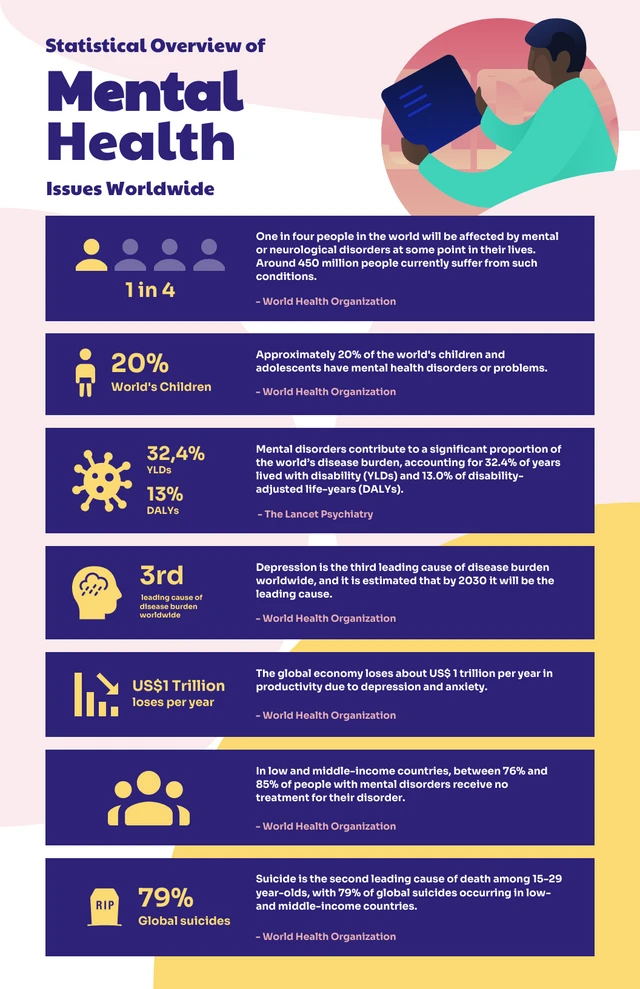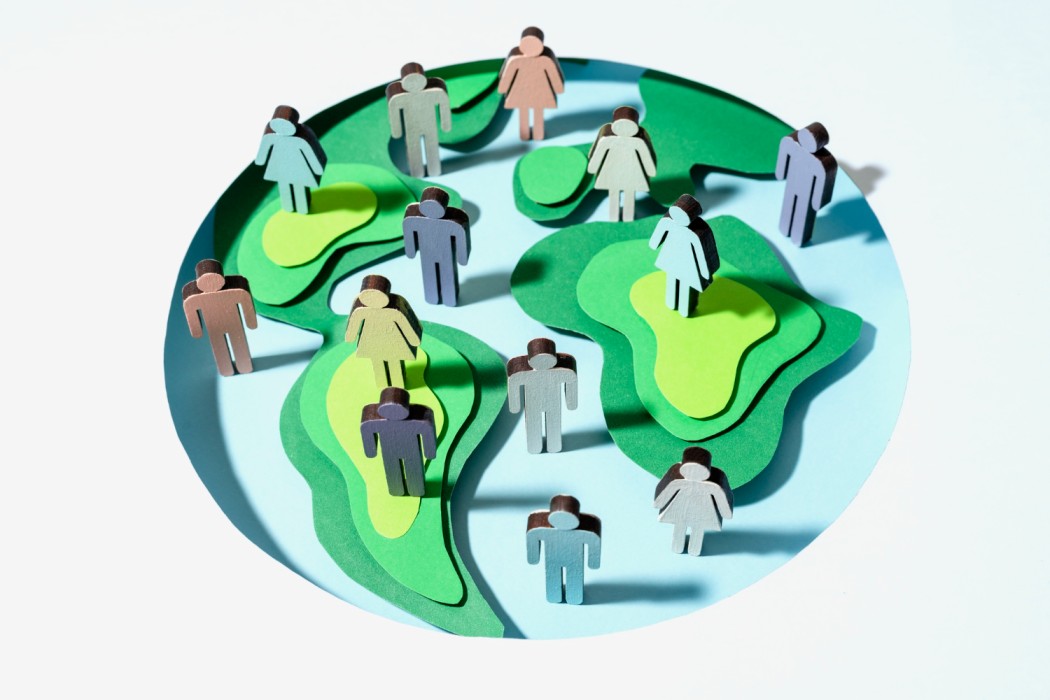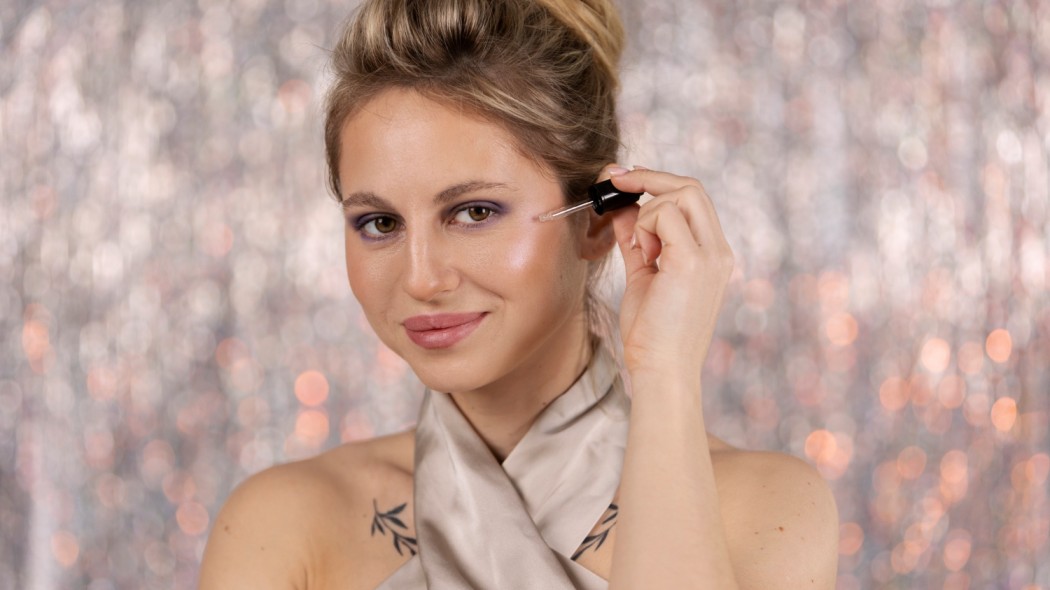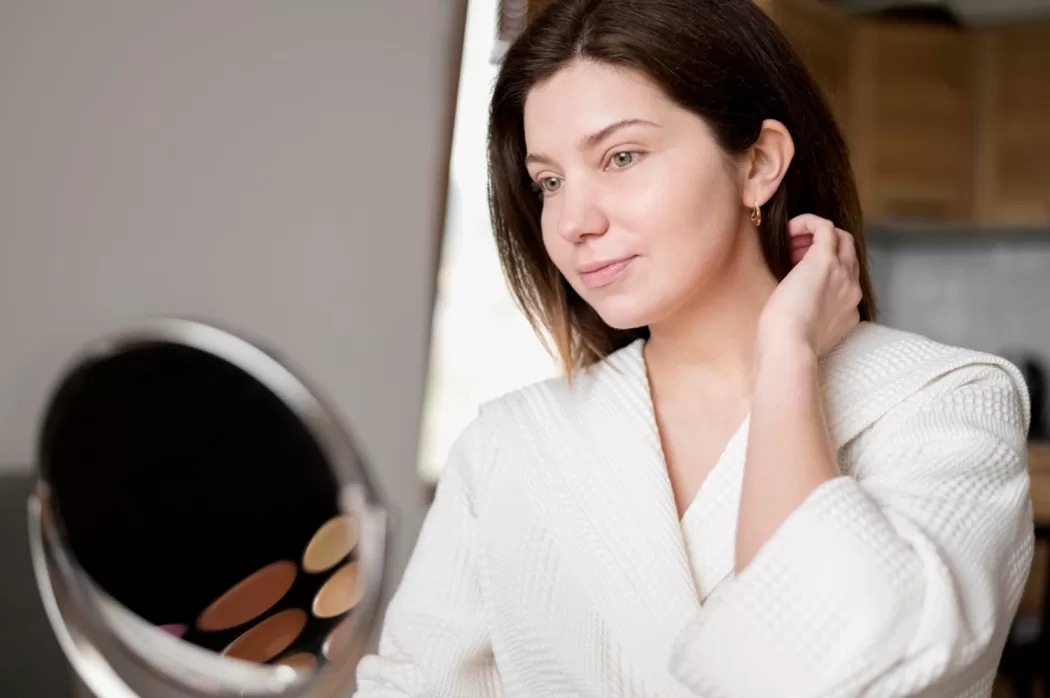Beauty has always been a central element of human culture. From ancient sculptures to contemporary social media, beauty standards have dictated how people perceive themselves and others. However, beneath the glittering surface lies a troubling reality: the hidden cost of these beauty standards and the relentless obsession with perfection. While the allure of beauty seems universal, the consequences of adhering to these often unattainable ideals are deeply personal, affecting mental health, financial stability, and societal cohesion.
Mental Health Impacts of Beauty Standards
At first glance, beauty standards may appear harmless or even aspirational. After all, who doesn’t admire an aesthetic ideal? Yet, the fixation on these standards often places undue pressure on individuals, particularly women and increasingly men, to conform to an ever-changing set of ideals. These standards are frequently defined by a combination of cultural traditions, media portrayals, and commercial interests. The result is a society where natural diversity in appearance is undervalued, and conformity to a narrow definition of beauty becomes the norm.
The Origin of Beauty Standards
Beauty standards have deep roots in history and culture. What was once influenced by traditions and regional customs has now become a globalized concept shaped by media and technology. Over time, the idea of beauty has narrowed, promoting unattainable ideals that often disregard age, race, or body type. Commercial interests, especially within the fashion, cosmetics, and fitness industries, further fuel this trend by marketing products and services that promise to help individuals achieve the “perfect look.” The result is a pervasive culture where the mental health aesthetic becomes tied to external validation and appearance, rather than internal well-being.
Social Media and the Mental Health Aesthetic

Social media platforms have become central to modern life, but they also contribute significantly to the perpetuation of unrealistic beauty standards. With curated feeds, filters, and photo editing tools, these platforms create a distorted reality. The “mental health aesthetic” presented on social media often involves polished images of seemingly perfect lives, flawless skin, and sculpted bodies. These depictions are rarely achievable in real life, but they influence millions of users who internalize these standards.
The constant comparison triggered by social media leads to a heightened sense of inadequacy. For many, the gap between their reality and the idealized mental health aesthetic portrayed online becomes a source of anxiety, self-doubt, and diminished self-worth.
Mental Health Consequences of Beauty Standards
One of the most insidious effects of beauty standards is their impact on mental health. The obsession with perfection often leads to anxiety, depression, and low self-esteem. Individuals who feel they cannot meet these standards may experience a diminished sense of self-worth and an increased risk of mental health issues.
Moreover, the relentless pursuit of the mental health aesthetic can lead to harmful behaviors such as extreme dieting, over-exercising, or even seeking invasive cosmetic procedures. These actions are often driven by the belief that physical transformation will lead to greater happiness or acceptance.
Cultural and Societal Pressures
Cultural expectations also play a significant role in shaping beauty standards and their mental health impacts. In many societies, beauty is equated with success, desirability, and social status. The mental health aesthetic becomes a marker of one’s worth, creating pressure to conform even at great personal cost.
For men, the rise of fitness culture has introduced new pressures to achieve a muscular, “ideal” physique. Similarly, women face expectations to maintain youthful appearances and slim bodies, often battling stereotypes and biases in professional and personal contexts.
Combating the Negative Impacts
Addressing the mental health impacts of beauty standards requires a multi-faceted approach. Education and awareness campaigns can help individuals understand the constructed nature of beauty ideals and their mental health aesthetic. Media literacy programs, particularly for younger audiences, can empower users to critically evaluate the images and messages they encounter online.
Additionally, fostering a culture of body positivity and acceptance is crucial. Campaigns that celebrate diversity in appearance and challenge conventional beauty standards can help shift societal perceptions. This change can encourage individuals to embrace their unique traits and prioritize their mental health aesthetic over societal expectations.
Conclusion: Redefining the Mental Health Aesthetic
Beauty standards are not just about appearance—they deeply affect mental health and well-being. The mental health aesthetic should not revolve around physical perfection but instead focus on inner peace, self-acceptance, and genuine happiness. By redefining beauty to include diverse representations and challenging harmful ideals, society can take significant steps toward improving mental health outcomes for everyone.
Ultimately, embracing a broader definition of beauty and promoting a more authentic mental health aesthetic can lead to a healthier, more inclusive world where individuals feel valued for who they truly are.
Financial and Physical Burdens of Perfection
The pursuit of perfection is a multi-faceted struggle that extends far beyond mental anguish, permeating both financial and physical aspects of individuals’ lives. This relentless drive, fueled by toxic beauty standards, has far-reaching implications for personal well-being and societal norms.
The Rise of Cosmetic Procedures and Their Accessibility
Once considered the exclusive domain of celebrities and the wealthy elite, cosmetic procedures have become increasingly accessible to the general public. Toxic beauty standards, perpetuated by social media, advertising, and popular culture, have normalized interventions like Botox injections, dermal fillers, and surgical enhancements. Today, individuals from various socioeconomic backgrounds feel pressured to undergo these procedures to align their appearance with an ever-changing ideal of beauty.
Financial Strain in the Pursuit of Perfection
The financial toll of conforming to toxic beauty standards can be staggering. Cosmetic procedures often come with a hefty price tag, ranging from hundreds to tens of thousands of dollars. For many, this means dipping into savings, taking on debt, or sacrificing other life priorities to fund their quest for an unattainable ideal. This economic strain highlights the disparity between the allure of achieving perfection and the reality of its costs.
Moreover, the influence of toxic beauty standards doesn’t stop at invasive procedures. Non-surgical treatments, high-end skincare products, and fitness regimens marketed as essential to achieving “perfection” further burden individuals financially. The cycle of spending, in pursuit of fleeting results, exacerbates feelings of inadequacy when these investments fail to deliver lasting satisfaction.
Physical Risks and Impacts
Beyond the financial implications, the physical consequences of chasing toxic beauty standards can be profound. Surgical and non-surgical procedures carry inherent risks, including complications, adverse reactions, and even permanent damage. Despite these dangers, many people willingly undergo multiple interventions, driven by the pressure to meet unrealistic societal expectations.
Even seemingly minor procedures, such as Botox injections, require regular upkeep to maintain results. The commitment to these treatments often becomes a lifelong cycle, both financially draining and physically taxing. Additionally, overuse of certain procedures can lead to unnatural appearances, ironically distancing individuals from the ideal they sought to achieve.
The Elusive Nature of Satisfaction
One of the most insidious aspects of toxic beauty standards is their ever-evolving nature. Even after enduring significant financial and physical costs, many find that the satisfaction they seek remains out of reach. Beauty ideals are constantly shifting, influenced by cultural trends, celebrity endorsements, and advancements in cosmetic technology. What is considered “perfect” today may be deemed outdated tomorrow, leaving individuals trapped in an endless loop of dissatisfaction.
A Call for Reflection
The financial and physical burdens imposed by toxic beauty standards raise critical questions about the societal emphasis on appearance. By promoting more inclusive and realistic representations of beauty, we can alleviate the pressure to conform and empower individuals to prioritize their well-being over unattainable ideals. A collective shift away from toxic beauty standards can pave the way for a culture that values authenticity and self-acceptance above all.
The pursuit of perfection, fueled by toxic beauty standards, has become a costly endeavor in every sense. As individuals and as a society, it is essential to recognize the harm caused by these unattainable ideals and to champion healthier, more sustainable definitions of beauty.
The Commercialization of Beauty Standards
The global beauty industry, valued at billions of dollars, has capitalized on society’s fixation with physical appearance. Beauty standards, shaped by media and cultural norms, play a pivotal role in this growth. These standards often dictate what is considered attractive or acceptable, creating a market ripe for exploitation. Companies use these ideals to craft advertisements that tap into people’s insecurities, promising solutions to perceived imperfections. This strategy has been particularly successful in driving the sales of skincare products, cosmetics, and fitness regimens.
Exploiting Fear of Imperfection
according to statistics:
- Over 40% of asked people report experiencing a fear of failure.
- 46% of women worried 20-40 percent of the time compared to 33 percent of men.
Advertisements in the beauty sector often amplify the fear of imperfection. By showcasing flawless models and idealized aesthetics, they create a stark contrast to the average person’s appearance. Beauty standards on social media exacerbate this issue by presenting curated and often edited versions of reality. As a result, consumers are drawn to products and services that promise to help them align with these ideals. This narrative fuels an endless cycle of purchasing, where the promise of transformation is a powerful motivator.
The Role of Social Media
Social media platforms have become significant contributors to the proliferation of beauty standards. Influencers and celebrities often set trends that define what is desirable. Beauty standards on social media are particularly insidious because they feel personal and relatable. Filters, editing apps, and retouching tools enable individuals to present an enhanced version of themselves, which then becomes a new benchmark for others. This cycle intensifies the pressure to conform and drives demand for beauty products and services.
A Lucrative Business Model
The commercialization of beauty standards is a highly profitable enterprise. Companies have found success in marketing products that promise to erase flaws, enhance features, or transform appearances entirely. From anti-aging creams to weight-loss supplements, the industry thrives on the narrative that beauty is both an achievable and necessary goal. Beauty standards on social media further amplify these messages, with influencers endorsing products that claim to bridge the gap between reality and perfection.
The Emotional Cost
While the financial cost of pursuing beauty is significant, the emotional toll is even more profound. Beauty standards on social media contribute to feelings of inadequacy and self-doubt. Consumers are conditioned to believe that they are never quite good enough, regardless of how much they invest in their appearance. This culture of dissatisfaction not only benefits the beauty industry but also perpetuates a cycle of emotional vulnerability.
Perpetual Dissatisfaction
The beauty industry relies on a model that ensures consumers are never fully satisfied with their appearance. Beauty standards on social media reinforce this dissatisfaction by constantly evolving and presenting new ideals. Whether it’s the latest skincare routine, fitness trend, or cosmetic procedure, there is always something more to achieve. This unrelenting pursuit of perfection fosters a culture of comparison and inadequacy.
A Broader Cultural Impact
The impact of beauty standards extends beyond individual consumers. Beauty standards on social media influence societal norms, shaping expectations in personal relationships, workplaces, and even healthcare. The emphasis on appearance often overshadows other attributes, such as intelligence, kindness, or creativity, perpetuating shallow values.
Challenging Beauty Norms
In recent years, there has been a growing movement to challenge traditional beauty standards. Activists and influencers are using their platforms to promote body positivity and diversity. While beauty standards on social media often perpetuate harmful ideals, they also provide a space for counter-narratives that celebrate authenticity and inclusivity.
Towards a Healthier Perspective
Shifting the focus from unattainable beauty standards to holistic well-being is essential for societal progress. By promoting self-acceptance and celebrating natural diversity, individuals can begin to break free from the cycle of dissatisfaction. Addressing the role of beauty standards on social media in shaping perceptions is a critical step in this process.
The commercialization of beauty standards has far-reaching implications, both financially and emotionally. Beauty standards on social media have amplified these pressures, creating a culture of perpetual inadequacy. Recognizing the impact of these ideals and promoting a healthier, more inclusive perspective is essential for fostering a society that values individuals for who they are rather than how they look.
Cultural and Societal Implications

Cultural and societal implications further underscore the hidden costs of beauty standards. These ideals often marginalize individuals who do not conform to them, whether due to race, age, body type, or other factors. For instance, Eurocentric features have long dominated global beauty norms, sidelining the rich diversity of other cultures. Similarly, ageism in beauty standards promotes a narrative that equates youth with desirability, diminishing the value of older individuals. These biases not only perpetuate discrimination but also undermine efforts toward inclusivity and equality.
The Path Toward Redefining Beauty
For centuries, the standard of beauty has wielded significant influence over how individuals perceive themselves and others. These standards, often rooted in narrow and unrealistic ideals, have shaped cultural expectations and personal identities, frequently leading to feelings of inadequacy and exclusion. From media portrayals to societal pressures, the standard of beauty has dictated not only what is considered attractive but also who deserves attention and respect.
The pervasive nature of these traditional standards has profound effects on mental health, self-esteem, and even professional opportunities. However, as society evolves, so too does the understanding of what beauty truly encompasses. Challenging these rigid frameworks is crucial to fostering a more inclusive and compassionate world.
The Rise of Body Positivity and Diversity
In recent years, movements advocating for body positivity and diversity have gained substantial traction. These initiatives aim to dismantle the conventional standard of beauty by celebrating individuals of all shapes, sizes, ethnicities, and abilities. Body positivity campaigns emphasize that beauty is not confined to a single mold but is instead a rich tapestry reflecting the diversity of humanity.
Social media platforms have played a pivotal role in amplifying these messages, giving rise to influencers and activists who challenge the traditional standard of beauty. These advocates promote self-love, acceptance, and the belief that everyone is inherently valuable, regardless of how closely they align with historical beauty norms. The growing visibility of diverse models, actors, and public figures is a testament to the shifting perception of beauty in modern culture.
Redefining Beauty Standards for a Broader Spectrum
Efforts to redefine the standard of beauty underscore the importance of inclusivity. By embracing a broader spectrum of characteristics and traits, society can move beyond superficial judgments and appreciate the richness of individual experiences. This redefinition includes not only physical attributes but also personal qualities that contribute to a person’s essence.
The reimagined standard of beauty focuses on celebrating inner virtues such as kindness, resilience, and creativity. These attributes, which transcend external appearances, are increasingly recognized as the true markers of a person’s worth. By shifting the emphasis from outward perfection to inner depth, the standard of beauty can evolve into a more meaningful and empowering concept.
The Role of Media in Transforming Beauty Narratives
Media outlets and advertisers play a significant role in shaping perceptions of beauty. Historically, they have perpetuated a narrow standard of beauty that marginalizes those who do not conform to specific ideals. However, many brands and creators are now embracing more inclusive representations of beauty. Campaigns featuring individuals from diverse backgrounds and body types challenge outdated stereotypes and pave the way for a more equitable portrayal of beauty.
This shift in media representation is vital in changing the narrative around the standard of beauty. When individuals see themselves reflected in advertising, television, and film, it fosters a sense of belonging and validation. By normalizing diverse expressions of beauty, media can help dismantle harmful norms and promote self-acceptance.
The Intersection of Beauty and Mental Health
The rigid adherence to a narrow standard of beauty has long been linked to mental health challenges, including anxiety, depression, and eating disorders. As society begins to embrace a more inclusive definition of beauty, the potential for improving mental well-being becomes evident. When people feel valued for who they are rather than how they look, it reduces the pressure to conform to unattainable ideals.
Educational initiatives that teach media literacy and promote critical thinking about the standard of beauty are essential. By equipping individuals with the tools to recognize and challenge unrealistic portrayals, society can foster a healthier relationship with beauty and self-worth.
The Path Forward: Celebrating Individuality
The journey to redefine the standard of beauty is ongoing, but progress is evident. Movements advocating for body positivity, diversity, and inclusivity continue to gain momentum, reshaping how beauty is perceived and celebrated. The evolving standard of beauty no longer prioritizes perfection but instead honors the authenticity and individuality of each person.
To create lasting change, it is essential to challenge outdated norms and support initiatives that promote acceptance. By recognizing the value of inner qualities and embracing a broader spectrum of beauty, society can create a world where everyone feels seen, valued, and empowered to be their authentic selves.
In conclusion, redefining the standard of beauty is not just about challenging traditional norms but about fostering a deeper appreciation for the qualities that make us human. By prioritizing kindness, resilience, and creativity, we can move toward a future where beauty is not confined to appearances but celebrated in its many forms.
The Role of Education and Awareness
Education and awareness play crucial roles in mitigating the negative effects of beauty standards. By fostering critical thinking and media literacy, individuals can learn to recognize and resist the unrealistic portrayals that dominate popular culture. Parents, educators, and community leaders have a vital role to play in instilling confidence and self-worth in younger generations, helping them to appreciate their unique attributes rather than conform to a homogenized ideal.
Industry Accountability and Cultural Change
In recent years, there has been a heightened awareness of the impact of society beauty standards on individuals and communities. The beauty and fashion industries, long criticized for perpetuating unrealistic and exclusionary ideals, are now facing calls for accountability. This cultural shift is not just a passing trend—it reflects a profound change in how society views beauty, representation, and inclusivity. Below, we explore the pressing need for industry responsibility and the transformative potential of embracing diversity.
Challenging Society Beauty Standards in Fashion
The fashion industry has historically been a dominant force in shaping society beauty standards, often celebrating narrow and unattainable ideals. For decades, runways and magazines featured predominantly one type of body, skin tone, and facial structure. However, the tides are changing. Designers and brands are increasingly showcasing models of varying sizes, ethnicities, and abilities. This move not only challenges society beauty standards but also aligns with the demands of modern consumers who seek authentic representation.
Brands like Rihanna’s Savage X Fenty and Chromat are leading the way by redefining what is considered beautiful. They are proving that inclusivity is not only ethical but also profitable, demonstrating that consumers gravitate toward brands that reflect the diversity of the real world.
Advertising’s Role in Shaping Cultural Narratives
Advertising plays a powerful role in enforcing or dismantling society beauty standards. For years, advertisements have perpetuated narrow definitions of beauty, often relying on digitally altered images and stereotypical portrayals. Such depictions have contributed to widespread insecurities and unrealistic expectations.
Today, there is a growing demand for authenticity in advertising. Campaigns that feature unretouched photos, diverse casts, and realistic depictions of beauty are resonating with audiences. Dove’s “Real Beauty” campaign is a prime example of a successful effort to challenge society beauty standards and celebrate natural beauty. By shifting the narrative, advertising can become a force for positive change, empowering individuals to embrace their unique attributes.
Cultural Awakening: A Shift in Beauty Ideals

The acknowledgment of the harmful effects of society beauty standards signals a broader cultural awakening. Movements advocating for body positivity, self-love, and mental health awareness are gaining traction. These movements challenge the status quo and highlight the need for an inclusive and diverse understanding of beauty.
The rise of social media has amplified these voices, offering a platform for individuals to share their stories and push back against traditional norms. Influencers, activists, and everyday people are using their platforms to dismantle society beauty standards, promoting messages of acceptance and individuality.
The Consumer Demand for Inclusivity
Consumers today are more aware of the impact of society beauty standards and are using their purchasing power to support brands that align with their values. This demand has encouraged companies to rethink their strategies, prioritize diversity, and create products that cater to a broader range of needs.
Inclusive beauty brands like Fenty Beauty have set a new standard by offering products for every skin tone, challenging society beauty standards that often excluded marginalized groups. As more companies follow suit, the industry is beginning to reflect the diversity of its consumer base.
The Path Forward
Holding industries accountable for perpetuating harmful society beauty standards is essential for fostering a healthier cultural narrative. Brands must continue to embrace diversity, challenge outdated norms, and prioritize representation. By doing so, they not only contribute to societal well-being but also resonate with consumers who value authenticity and inclusivity.
This shift represents more than a change in marketing strategies—it marks a cultural revolution. As we continue to address the cost of society beauty standards, we move closer to a world where everyone is celebrated for their unique beauty.
Conclusion
Ultimately, the obsession with perfection fueled by beauty standards is a reflection of deeper societal issues. It reveals how much value is placed on appearances and how little on the intrinsic qualities that make individuals unique. By redefining these standards and celebrating diversity, society can move toward a more inclusive and compassionate vision of beauty. This transformation requires collective effort—from individuals rejecting unrealistic ideals to industries embracing representation and authenticity.
The hidden cost of beauty standards is steep, but the potential benefits of challenging and changing these norms are immeasurable. A world where beauty is seen as a diverse and dynamic concept rather than a rigid ideal is a world where individuals can thrive, free from the pressures of perfection. This shift is not just about redefining beauty; it’s about reclaiming humanity and fostering a culture of acceptance and empowerment.
Andrea Balint is a writer and researcher focused on human behavior, workplace psychology, and personal growth. Through her work at CareersMomentum, she explores how mindset, leadership, and emotional intelligence shape modern careers. With a background in communication and HR development, she transforms complex ideas into practical insights that help readers build clarity, confidence, and professional purpose.
